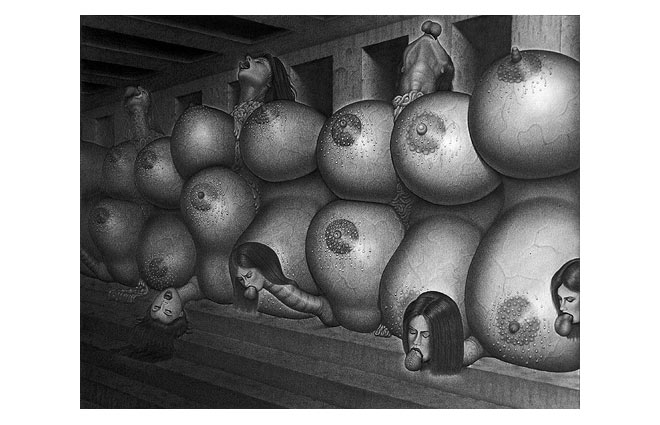Evolutionary psychologists who study mating behavior often begin with a hypothesis about how modern humans mate: say, that men think about sex more than women do. Then they gather evidence — from studies, statistics and surveys — to support that assumption. Finally, and here’s where the leap occurs, they construct an evolutionary theory to explain why men think about sex more than women, where that gender difference came from, what adaptive purpose it served in antiquity, and why we’re stuck with the consequences today.
Lately, however, a new cohort of scientists have been challenging the very existence of the gender differences in sexual behavior that Darwinians have spent the past 40 years trying to explain and justify on evolutionary grounds. […]
Everyone has always assumed — and early research had shown — that women desired fewer sexual partners over a lifetime than men. But in 2003, two behavioral psychologists, Michele G. Alexander and Terri D. Fisher, published the results of a study that used a “bogus pipeline” — a fake lie detector. When asked about actual sexual partners, rather than just theoretical desires, the participants who were not attached to the fake lie detector displayed typical gender differences. Men reported having had more sexual partners than women. But when participants believed that lies about their sexual history would be revealed by the fake lie detector, gender differences in reported sexual partners vanished. In fact, women reported slightly more sexual partners (a mean of 4.4) than did men (a mean of 4.0).
In 2009, another long-assumed gender difference in mating — that women are choosier than men — also came under siege. In speed dating, as in life, the social norm instructs women to sit in one place, waiting to be approached, while the men rotate tables. But in one study of speed-dating behavior, the evolutionary psychologists Eli J. Finkel and Paul W. Eastwick switched the “rotator” role. The men remained seated and the women rotated. By manipulating this component of the gender script, the researchers discovered that women became less selective — they behaved more like stereotypical men — while men were more selective and behaved more like stereotypical women. The mere act of physically approaching a potential romantic partner, they argued, engendered more favorable assessments of that person.
Recently, a third pillar appeared to fall. To back up the assumption that an enormous gap exists between men’s and women’s attitudes toward casual sex, evolutionary psychologists typically cite a classic study published in 1989. Men and women on a college campus were approached in public and propositioned with offers of casual sex by “confederates” who worked for the study. The confederate would say: “I have been noticing you around campus and I find you to be very attractive.” The confederate would then ask one of three questions: (1) “Would you go out with me tonight?” (2) “Would you come over to my apartment tonight?” or (3) “Would you go to bed with me tonight?”
Roughly equal numbers of men and women agreed to the date. But women were much less likely to agree to go to the confederate’s apartment. As for going to bed with the confederate, zero women said yes, while about 70 percent of males agreed.
Those results seemed definitive — until a few years ago, when Terri D. Conley, a psychologist at the University of Michigan, set out to re-examine what she calls “one of the largest documented sexuality gender differences,” that men have a greater interest in casual sex than women.
Ms. Conley found the methodology of the 1989 paper to be less than ideal. “No one really comes up to you in the middle of the quad and asks, ‘Will you have sex with me?’ ” she told me recently. “So there needs to be a context for it. If you ask people what they would do in a specific situation, that’s a far more accurate way of getting responses.” In her study, when men and women considered offers of casual sex from famous people, or offers from close friends whom they were told were good in bed, the gender differences in acceptance of casual-sex proposals evaporated nearly to zero.
{ NY Times | Continue reading }






















